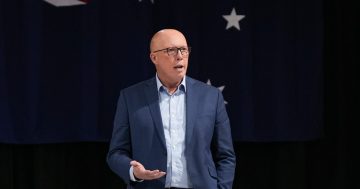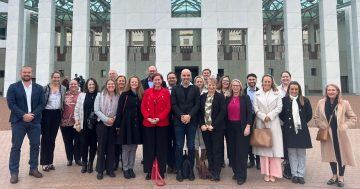Brad Giles* says the signature of great leadership lies in five simple results that a great leader creates, but good leaders do not.
 As a manager or leader within Government, the question you may be asking yourself either consciously or unconsciously is: “How can I make my potential count for the most in this world of effort?”
As a manager or leader within Government, the question you may be asking yourself either consciously or unconsciously is: “How can I make my potential count for the most in this world of effort?”
And that is exactly the question you should be asking.
But not for the sake of status or accomplishment, but for the sake of people you care about, the issues you care about, for the sake of usefulness in the world.
To become more effective, it’s important to first consider a simple question that’s intrigued me for more than 20 years: What is the tangible difference between a good leader and a great one?
In this world of endless meetings, emails and new management fads, how can a leader exchange their effort for the greatest results with happy stakeholders as well as healthy financial results?
Many leaders achieve good results, but deep inside they might know that their effort could count for more; they aspire to achieve great results but might not know what those great results are, or what they must do in order to achieve great results.
Over my 20 years as an entrepreneur and leadership team coach, I couldn’t find a book that detailed exactly what a leader must do in order to achieve great results.
A truly great leader looks to have an enduring, positive impact not only on the immediate environment and economics, but also the people, the employees, customers and suppliers, as well as the long-term growth and stability of the organisation.
If we look to distil what a great leader does and can do each and every week to provide both short and long-term value, the five roles or concepts that emerge are: ambassador, accountability, culture, strategy and succession planning.
By performing these roles, within the context of their own style and environment, a great leader creates five key results that good leaders do not.
These five roles are:
Top performers — By creating an environment of accountability, which top performers crave, as well as undertaking a strategic role as an ambassador to foster pride in the best people, great leaders achieve a higher percentage of top performers relative to industry averages.
Higher retention — By cultivating pride in their organisation, manager, team and product through the culture role – as well as being a positive ambassador for the organisation – employees tend to stay longer.
Higher productivity — great leaders get a higher return for each dollar paid to employees. People in the organisation are more effective because a successful strategy role generally produces a higher gross profit or output relative to employee compensation, and an attractive culture where people are proud is conducive to a more productive environment.
Consistent growth — you can bank on a great leader growing the organisation every quarter and every year. The efficacy of strategy, its ability to drive productivity, coupled with the succession planning role and its ability to actively consider all potential growth-affecting issues, ensures that growth occurs no matter the environment.
Consistent results — there are no surprises with great leaders. They have successfully mitigated risks and have built a group of employees and suppliers who achieve the results they’re supposed to via the accountability role, and equally achieve the consistency of those results via the succession planning role where major risks have a “plan B”.
Whatever leadership role you perform, if your goal is to make your effort count for the most it’s important to understand what ‘the most’ actually means — the tangible difference between good and great results.
Then you can consider what activities or roles create those results and assess what activities you are currently performing – or are not. This is the area I define as your leadership comfort zone.
Great leaders are not born that way.
They are not made to thrive – they learn to thrive.
But knowing what great results look like and how you can push outside your leadership comfort zone are key parts of the journey.
* Brad Giles is a leadership team coach, adviser and entrepreneur. His website is www.evolutionpartners.com.au.











